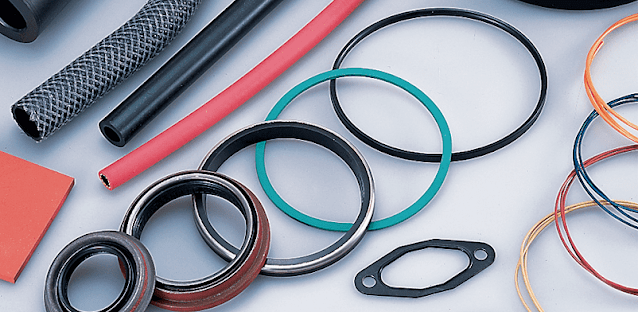Future Prospects of Global Laboratory Proficiency Testing Market


 |
| Fluoroelastomer Market |
Fluorine-containing polymers, also known as fluoroelatomers,
are noted for their extraordinary resistance to heat, weathering, and a wide
range of fluids and chemicals, as well as their exceptional sealing and
mechanical qualities. The fluoroelastomers are made at temperatures ranging
from -26°C to 205–230°C, while they can be made at lower temperatures for short
periods of time. Some forms of perfluorocarbon elastomers can withstand
temperatures as high as 327°C. The fluroelastomer is chemically resistant and
has excellent characteristics. It is commonly used in automotive, aerospace,
oil and gas, and other high-temperature applications. Fluroelastomer, also
known as fluorocarbon elastomer, has exceptional resistance to oxygen, ozone,
and heat. Ketones and ethers swell fluoroelastomers, which have a high density.
Their low chemical reactivity also aids in the interlinking of polymer chains,
which is required for the creation of a rubbery substance. In Fluoroelastomers
market, were first created in the 1940s and have since become the
preferred material for aeronautical and industrial equipment applications.
Fluorocarbon elastomers, fluorosilicone elastomers, and
Perfluoroelastomers are the three types of fluoroelastomers available. Fluorocarbon
elastomers are noted for their outstanding resistance to heat, weathering, and
a wide range of fluids and chemicals. They're also known for their superior
mechanical and sealing characteristics. This elastomer is commonly utilised in
applications that require a wide temperature range and are subject to chemical
attack. Fluorocarbon elastomers are more expensive than other fluoroelastomers
and have a separate formulation and curing technology. This fluorocarbon
elastomer has a poor resilience and a strong solvent resistance. Fluorosilicone
elastomers, on the other hand, are UV and ozone resistant by nature and combine
fluorocarbon and silicone properties. They have the same resistance to
solvents, fuels, and oil as fluorocarbons and have the same high- and
low-temperature stability as silicones. Fluorosilicone elastomers are less
robust and abrasion resistant than other elastomers. Fluorosilicone elastomers
are primarily utilised to manage fuel emissions in aeroplane fuel systems and
the automobile industry. Fluorosilicone elastomers, also known as
fluorovinylmethyl silicone rubber, are a type of fluorosilicone elastomer.
Perfluoroelastomers are a type of speciality high-performance elastomer with
outstanding chemical resistance and high-temperature stability. Paint and
coating operations, oil and gas recovery, semiconductor manufacturing, as well
as the pharmaceutical, chemical process, and aircraft and aerospace sectors,
all employ fluoroelastomers.
Comments
Post a Comment